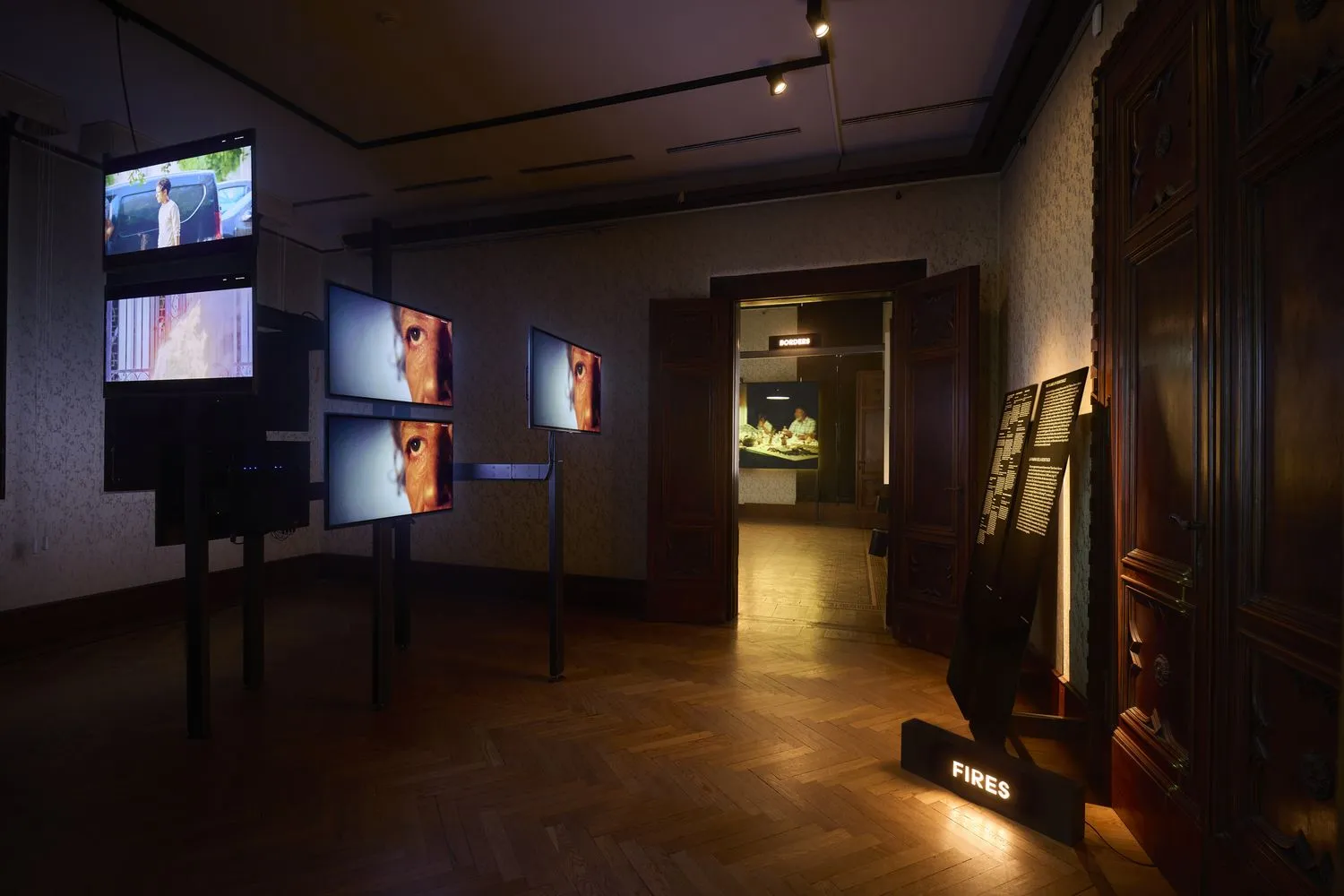 Installation view of Your Ghosts Are Mine on view at ACP–Palazzo Franchetti. Photo by David Levene. Courtesy Qatar Museums
Installation view of Your Ghosts Are Mine on view at ACP–Palazzo Franchetti. Photo by David Levene. Courtesy Qatar Museums A few goals are set with the current exhibition at ACP–Palazzo Franchetti in Venice featuring new voices in Arab and Global South film and video. The show's title, Your Ghosts Are Mine, Expanded Cinemas, Amplified Voices, hints at a few immediately, including the expansion of understanding of film and video and the impetus to bring new voices from the less represented regions to the global art scene.
The setting is perfect—the 60th iteration of the famed Venice Biennale, which, under the guidance of artistic director Adriano Pedrosa, aims to recalibrate the art world by bringing, in larger numbers than before, Indigenous, folk, and outsider artists. Within the new framework that critically reevaluates major tropes of Western art history, new voices in film and video and the collateral investigation of the medium within the overarching concept of art come as welcomed additions.
Curated by Matthieu Orléan with the collaboration of Majid Al-Remaihi and Virgile Alexandre, Your Ghosts Are Mine, Expanded Cinemas, Amplified Voices sprawls through ten galleries of the palazzo in an architectural setting specifically designed for the occasion by Cookies.
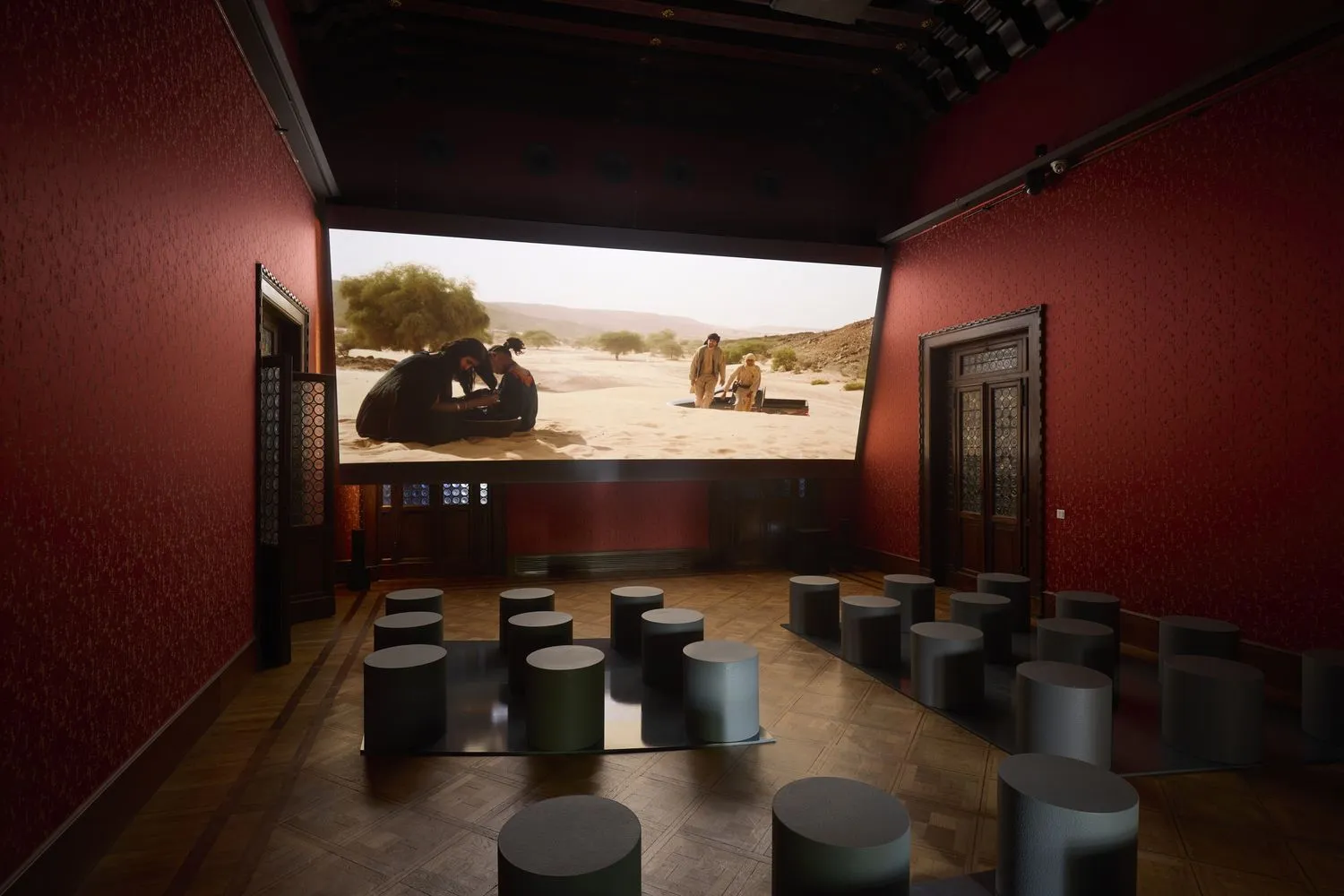
Video art and filmmaking from the MENA region and regions commonly designated as the Global South have been less represented in contemporary global culture, with the focus mainly being on traditional arts and crafts. However, the mediums of video and film have been constantly growing, with stronger impetus in the last few decades. Traditional aspects of different cultures from these regions, including poetic and narrative traditions, blended with technological experiments, led to a fascinating moving image art highlighting individual and communal concerns through wide-ranging formats and genres.
Recently, the democratization of the medium through greater accessibility to higher quality production led to further proliferation of the medium, overcoming the previous attachments to craft knowledge. The rise of social media and different video platforms further enabled artists to engage and work with various digital archives and use their smartphones as primary production tools.
Your Ghosts Are Mine collects these voices and presents them through several segments of the show dedicated to contemporary experiences of exile, often perilous transnational journeys, memory, and community life. Each gallery is dedicated to a specific topic that is deeply rooted in local considerations, such as deserts as places of rebirth and cradles of civilization; ruins, which brings focus on what remains visible from the past, the relics of previous times; women's voices; borders, which increasingly mark the destinies of many people as demarcations between allowed and forbidden places, both virtual and physical; and exile, an experience intertwined with many of the topics covered in other galleries.
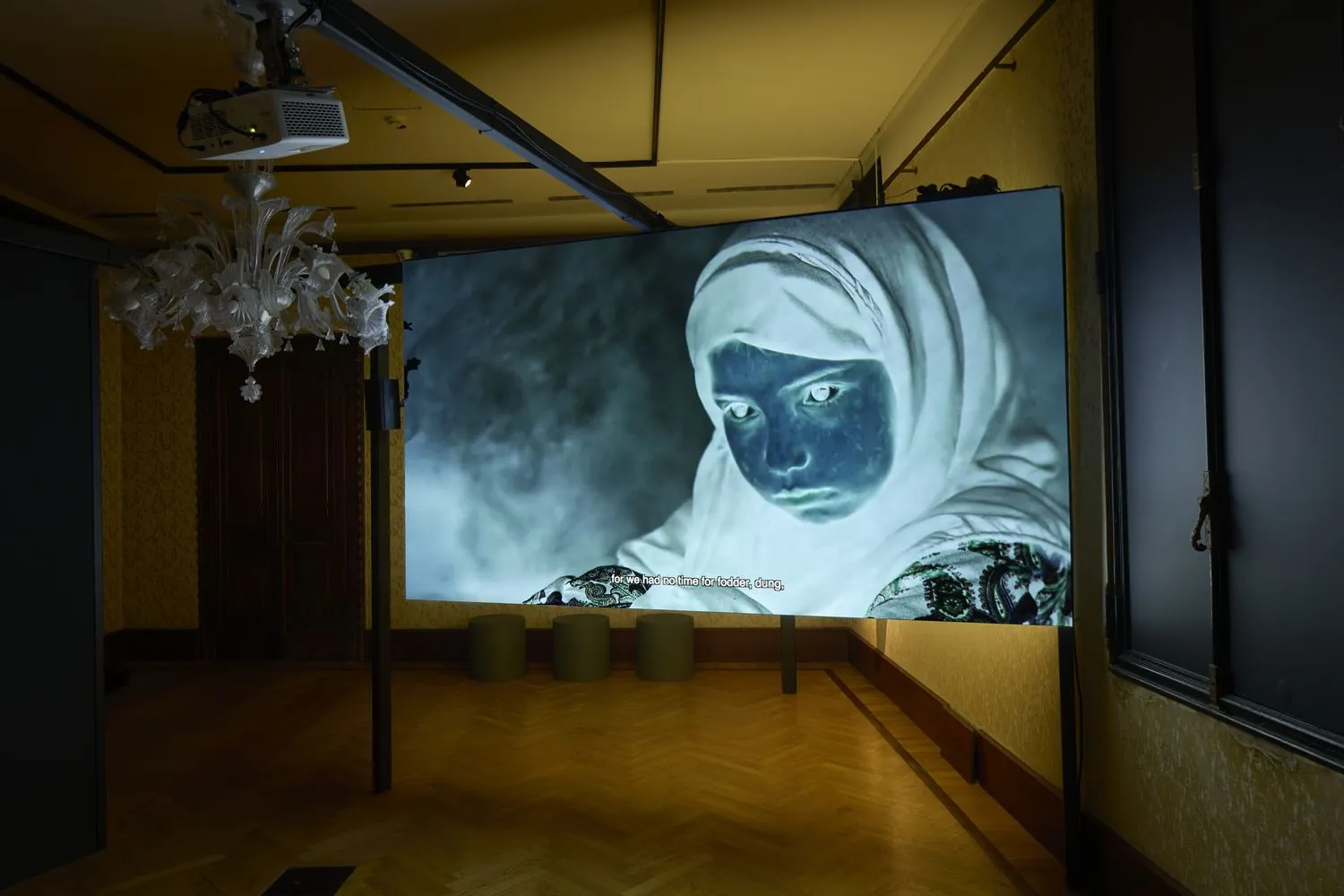
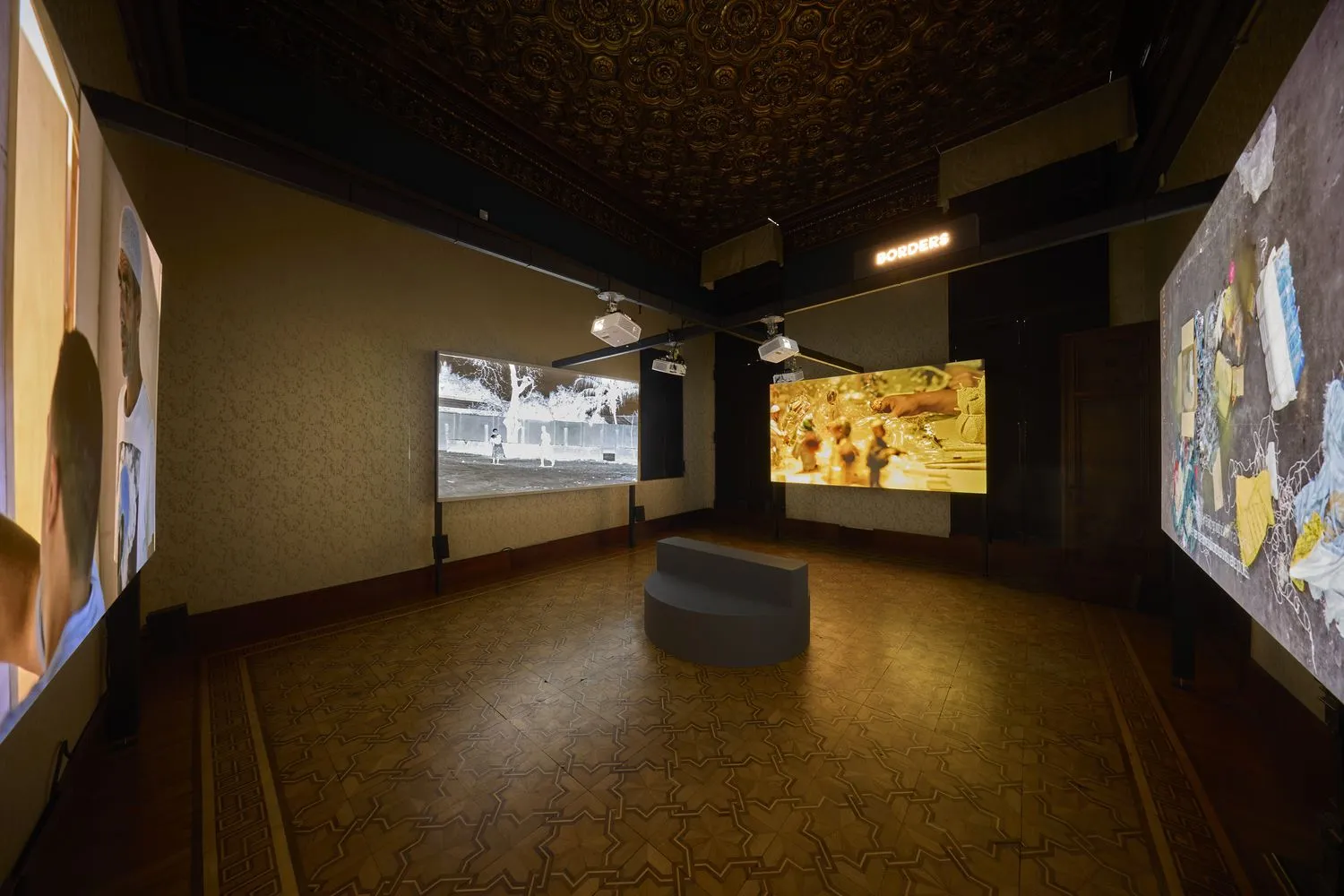
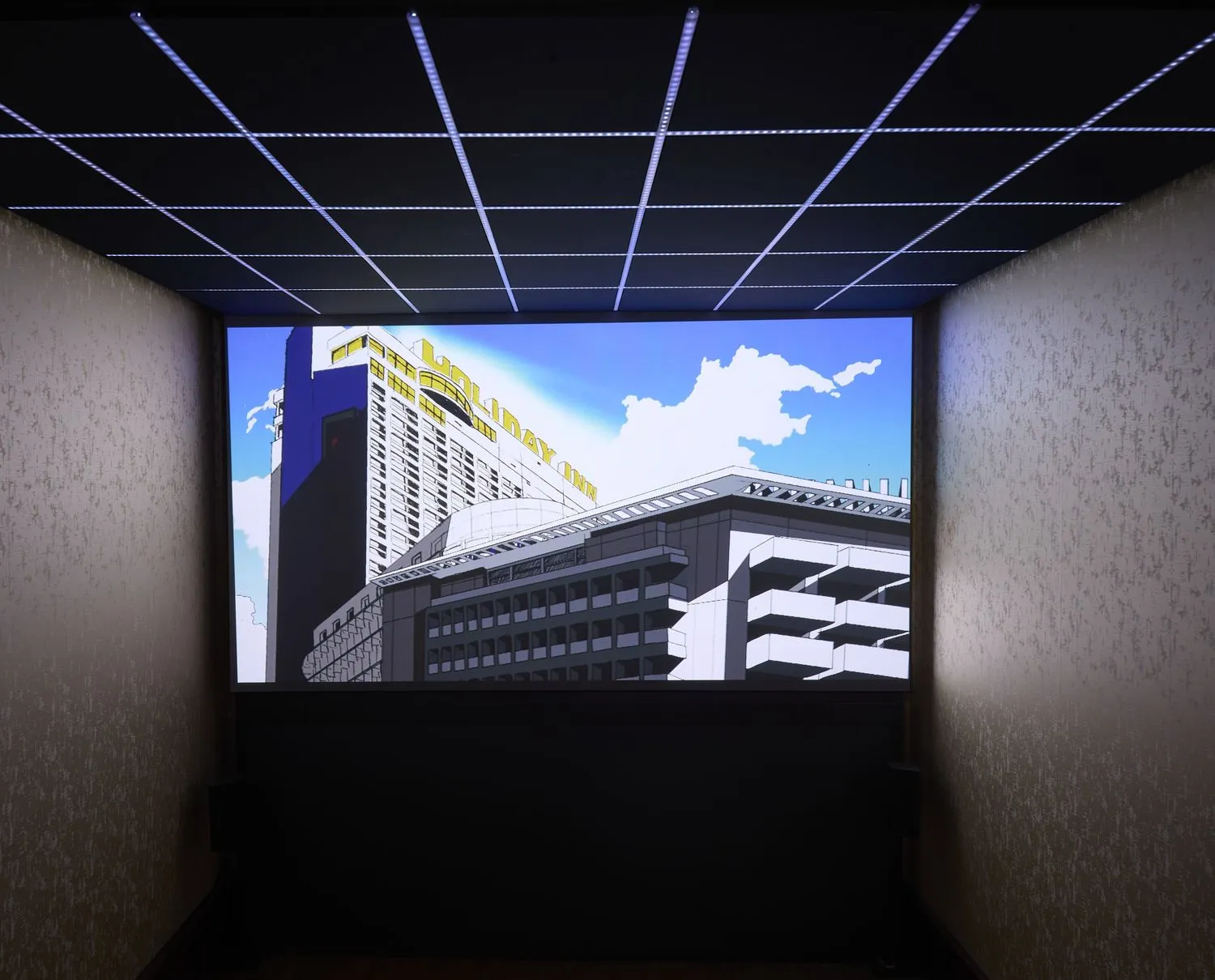
The works span genres from documentary and animation to fiction and memoir, combining postcolonial sensibilities with facts and invented narratives, modernity, and tradition. The selected excerpts come from more than 40 artworks by artists such as Faouzi Bensaidi (Morocco), Jessica Beshir (Ethiopia), Ali Cherri (Lebanon), Soudade Kaadan (Syria), Shirin Neshat (Iran), Larissa Sansour (Palestine), Tariq Teguia (Algeria), and Shaima Al Tamimi (Yemen), among others. The exhibit also includes video works by Hassan Khan, Lida Abdul, Wael Shawky, and Sophia Al-Maria.
"These films don't belong to the mass media and cultural industry. They follow their own paths, never forgetting that they are and will be perceived as pieces of history," said Matthieu Orléan.
This is not Ali Cherri's first presentation in Venice, as he exhibited in 2007 in the Pavilion of Lebanon and 2022 when he won the Silver Lion Award for the video installation Of Men and Gods and Mud (2022). Shirin Neshat is another star name in contemporary art included in the display, best known for her works that explore Iranian culture and women's position in it. In 1999, she won the Golden Lion for the video Turbulent, one of the first she had ever made.
"Opening at the same time as the Venice Art Biennale and continuing throughout the presentation of the Venice Film Festival, Your Ghosts Are Mine will open the eyes of multitudes of international viewers to the ideas, the feelings, and above all the artistic visions of today's filmmakers from the Arab world and neighbouring regions," her Excellency Sheikha Al Mayassa bint Hamad bin Khalifa Al-Thani, Chairperson of Qatar Museums and of Doha Film Institute, explains.
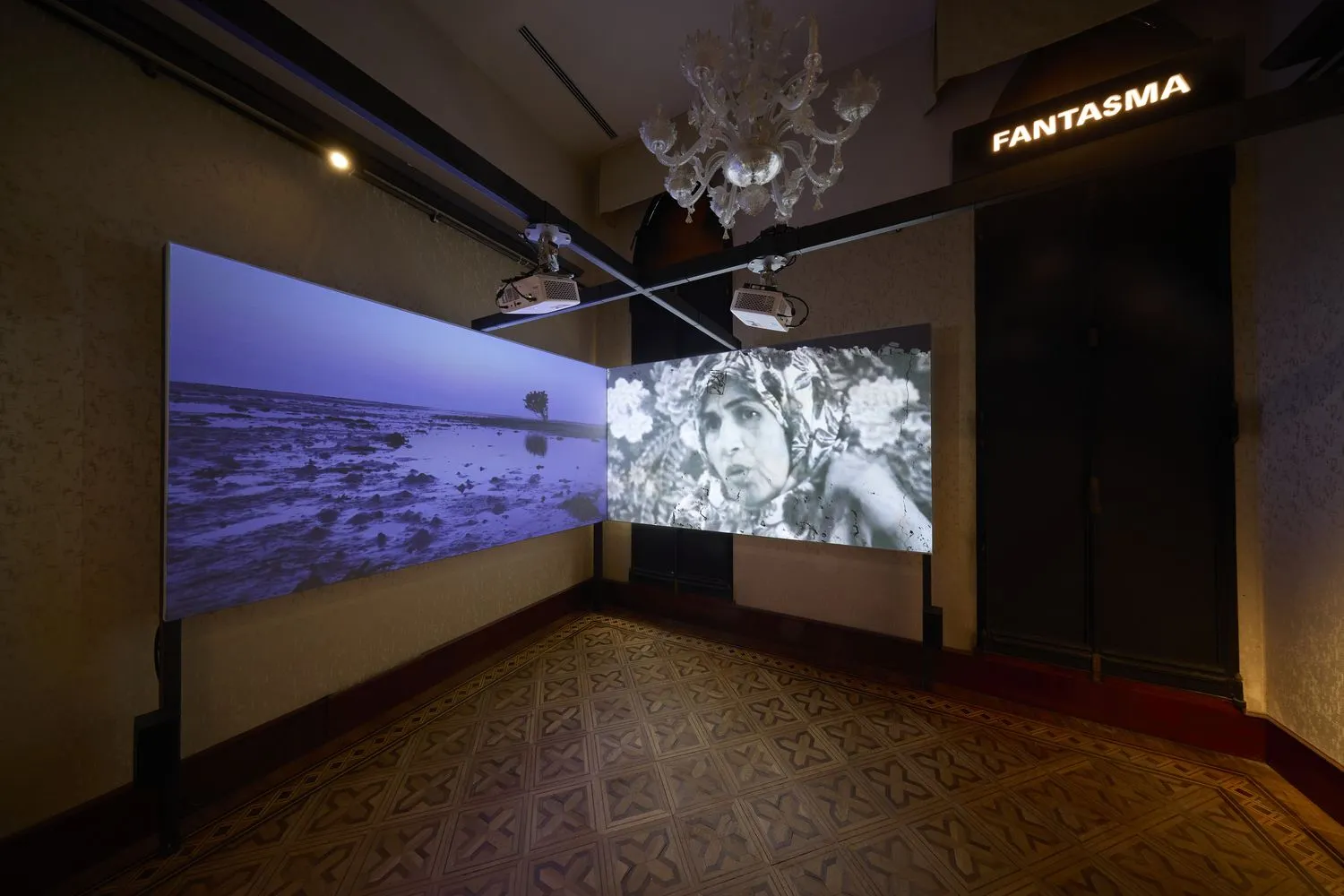
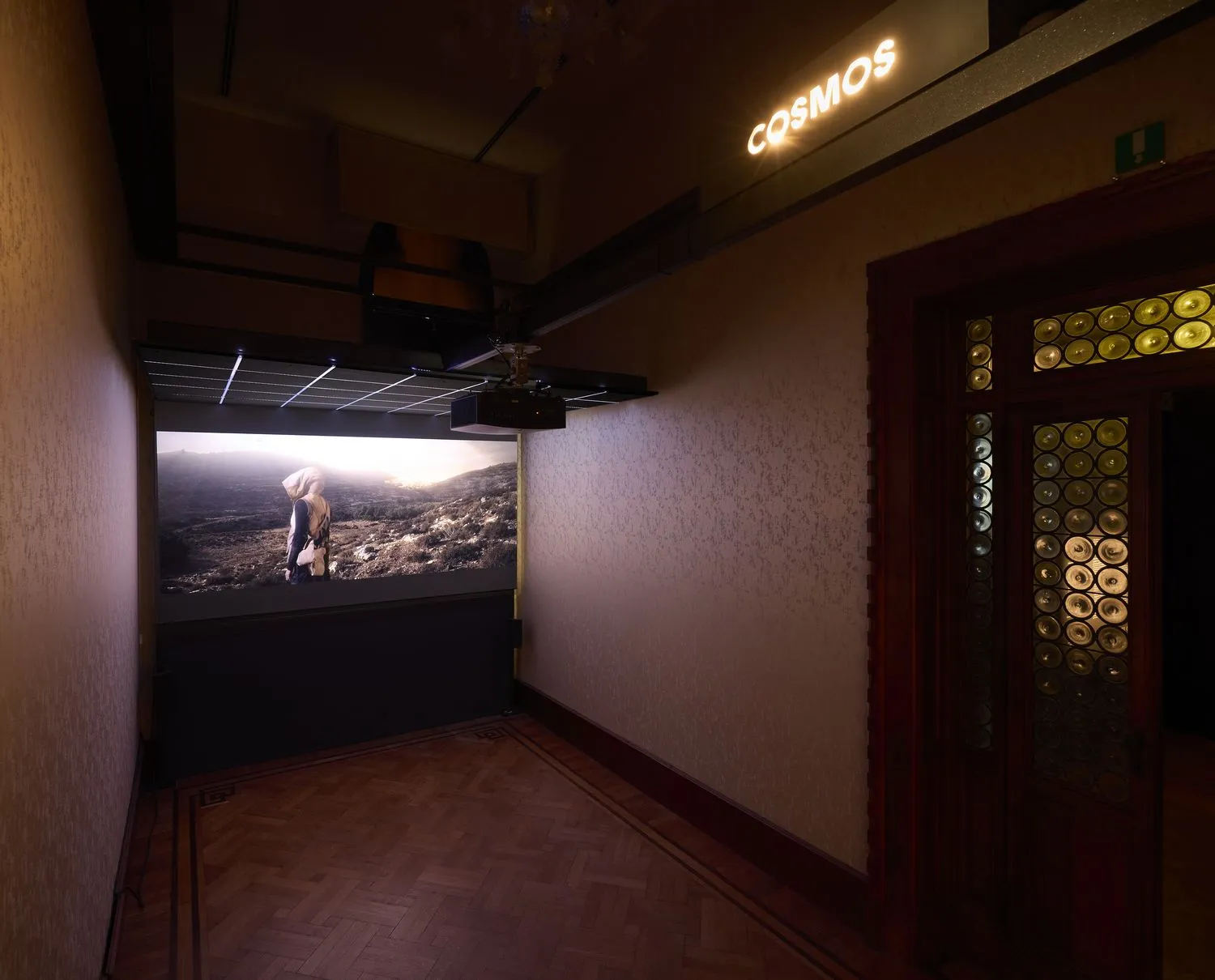
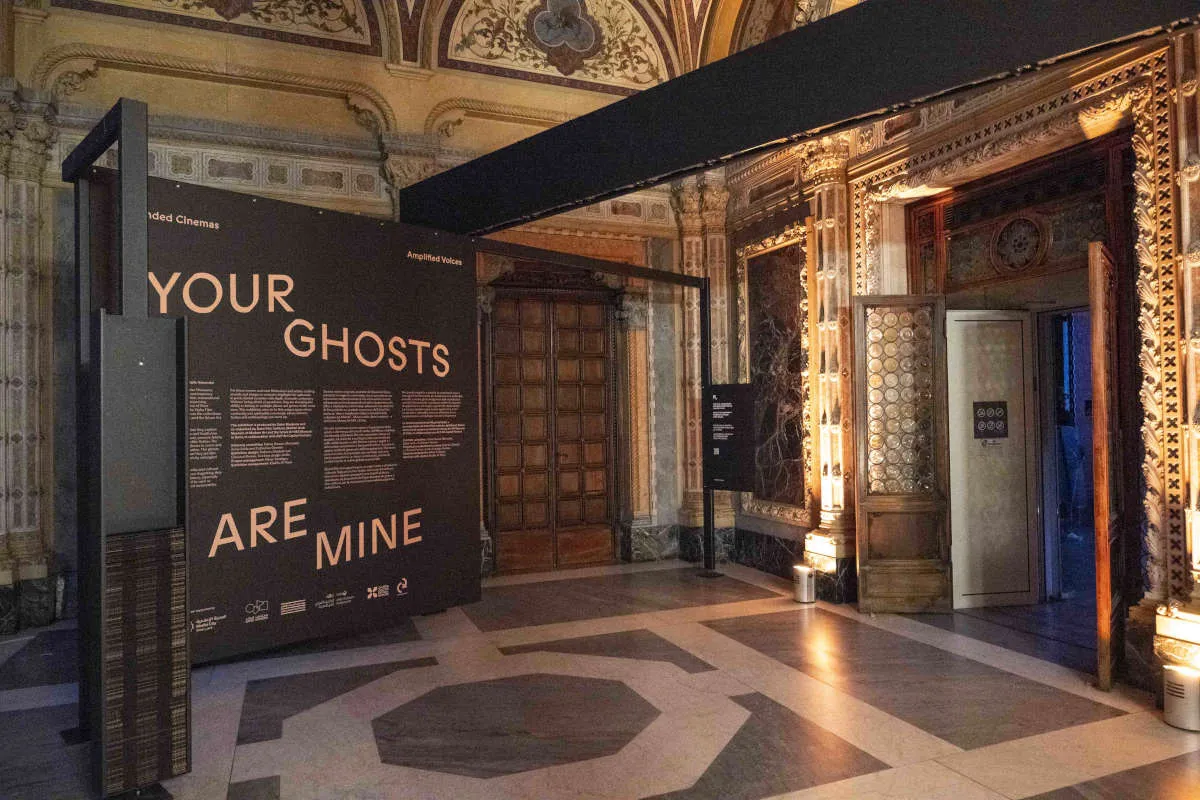
Following global film and video art exhibition practices, the presentation in Palazzo Franchetti includes elaborate sculptural structures by Cookies, creating an immersive environment for viewing. This follows a stronger focus on incorporating film and video more closely within museum collections, which is one of the aims of the Venice show.
"...the ambitious attempt of Your Ghosts Are Mine to reorganise the categories we use to understand the 21st century, whether the lines being crossed are geopolitical borders, the boundaries between fiction and documentary or the outmoded distinction between film and video. We believe that museums have a special role to play in fully integrating cinema at large into the history of art."
With the rise of funding for art in the Middle East, younger artists are using film as their medium of choice, with political aspects of the everyday realities in the region finding their way to the screens. Following the great tradition of revolutionary cinema from the past, these new voices bring daring aesthetic choices to the pressing topics of their generation.
"Cinema is not only the mirror of political changes: it participates in them, anticipates them, accompanies them, supports them, transforms them in a daring aesthetical approach," concludes Orléan.
The selection in Venice includes films initiated, co-financed, and supported by the Doha Film Institute and video works from the collections of Mathaf: Arab Museum of Modern Art and the future Art Mill Museum.
The exhibition Your Ghosts Are Mine, Expanded Cinemas, Amplified Voices is on view until November 24th, 2024. The exhibition design is by architects and spatial designers Cookies (Federico Martelli and Clément Périssé).